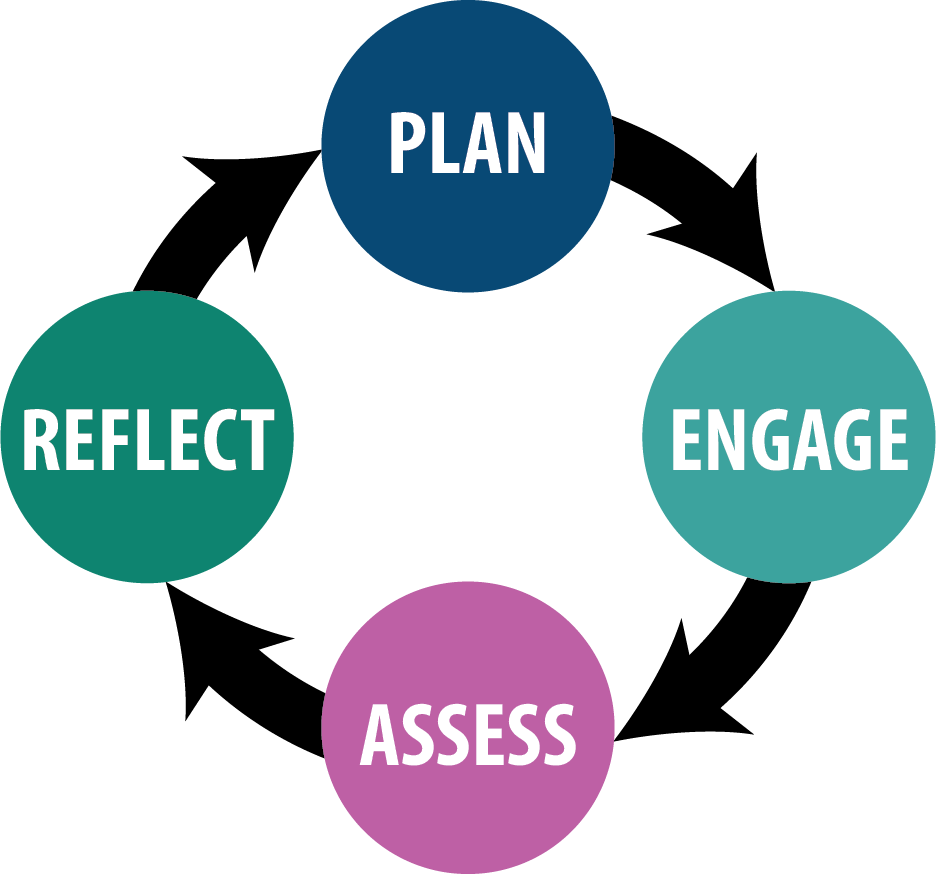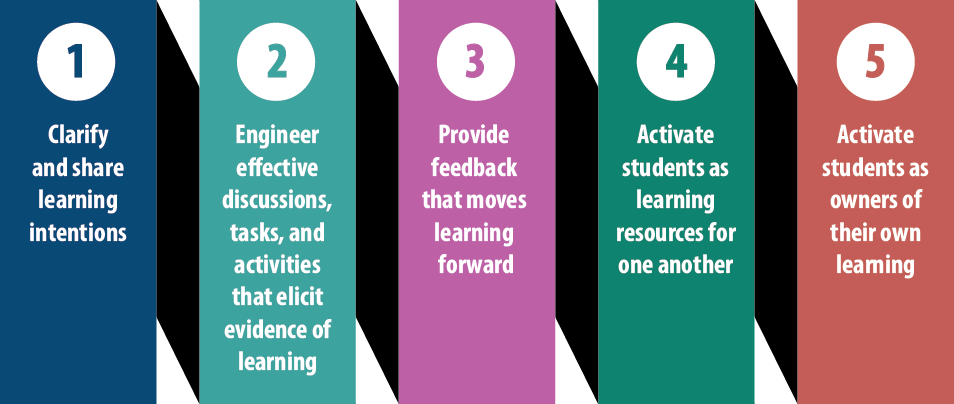It is a truth universally acknowledged… that instructors can teach students all day long, but they can’t learn for students. That’s something that students have to do on their own. There are, however, tactics that instructors can use to help ensure that students are learning. Assessment for Learning (AFL) is one such tactic.
What is Assessment for Learning?
Assessment for Learning is different from Assessment of Learning. Assessment of learning comes at the end of a cycle and tells an instructor what a student has learned. Assessment for learning assesses students constantly during the learning process and allows instructors to adapt their instruction to meet students where they are and help them get to where they need to be.
AFL is a metacognitive practice. In other words, the goal of AFL is to teach students to have an awareness of their own thought processes—to think about thinking—in order to maximize their learning. How does it maximize learning? Students begin to assess their own understanding and performance and can start taking their learning into their own hands.
But what does AFL look like from an instructional point of view? AFL follows a cycle that includes stages of planning, engaging, assessing, and reflecting.
The Cycle of Assessment for Learning

• Plan: Instructors need two things before class starts. A plan on where to start and a goal for what a student should have learned. (This holds true for all teaching units, from a single class discussion through a whole semester’s worth of instruction.) The plan allows for adjustments to the course without losing sight of the end goal. This is where the instructor asks where students are now, where the students are going, and how the instructor is going to help them get there.
• Engage: Students learn best when they engage with the subject. Passive learning, such as listening to a lecture or reading a textbook, isn’t enough. Engaging students can be as simple as engaging in a Think, Pair, Share exercise that then turns into classroom discussions. Instructors should ask questions of students and then give students time to actually consider and answer them.
• Assess: The classroom is a continuous assessment process. This doesn’t mean constant tests or quizzes; it means providing students the opportunity to demonstrate their understanding. This can be through questions posed by the instructor; through Think, Pair, Share activities with fellow students; through group discussion; and through other class activities that promote conversation.
• Reflect: This step is where the instructor needs to be flexible. The assessment step shows instructors where students are in the learning process—the time for reflection is when an instructor needs to adjust their instruction to meet students where they are in order to help them get where they need to be. At this stage the instructor returns to the questions posed in the planning phase: Where are students now? Where are students going? How can the instructor help them get there?
And thus, the cycle continues.
Now that you’ve seen the cycle of AFL, how do you actually implement it? According to Dylan William, a renowned researcher of AFL, there are five steps for implementing AFL in the classroom.
The Five Steps to Implement Assessment for Learning

1. Clarify and Share Learning Intentions: It can help students to know what it is they are meant to be learning. This can be as simple as naming the topic of discussion for the day and as broad as providing a class syllabus at the beginning of the semester. In fact, it serves students well to have both expectations laid out for them.
2. Engineer Effective Discussions, Tasks, and Activities that Elicit Evidence of Learning: This is where instructors both engage and assess students to see where they are in the learning process. This is a constant process and is done using both regular classroom discussions and through carefully chosen activities, such as Think, Pair, Share.
3. Provide Feedback that Moves Learning Forward: There are two types of feedback: ego-centric feedback and task-focused feedback. While instructors can, and should, encourage students, instructors should dig a little deeper when offering feedback. There is a difference between “Great job!” and “Great job! Now can you tell me a little bit more?” The difference is that one ends the conversation, the other pushes the discussion forward. Check out our post on assessment and feedback!
4. Activate Students as Learning Resources for One Another: Peer feedback plays a central role in AFL. Peer feedback is more than just students talking to each other. Peer feedback requires students to analyze their fellow student’s work—thus delving further into the subject matter themselves—before they can offer valuable feedback. Engagement with the material improves both their own understanding and the feedback and help they can give. Check out our post on peer and self- assessment!
5. Activate Students as Owners of Their Own Learning: Self-assessment is key to student development. Ironically, however, it requires work from the instructor. It is instinctive to assign grades whenever a student provides their work. Imagine, however, providing not grades, but feedback. This gives students the opportunity to think about their work not in terms of whether they passed or failed, but in terms of how they can improve. Grades can come later; feedback should come first. There are other ways to encourage self-assessment—to learn more, check out our post on peer and self- assessment.
Assessment for Learning may seem intimidating; in truth, assessment can fit naturally into an instructor’s routine. Assessment provides benefits for all members of the classroom, both instructor and student. Not only does it help instructors meet students where they are at, it helps students engage with and promote their own learning.
Teachers may not be able to learn for their students, but they can give students the tools to learn for themselves.
To learn more about AFL, check out Dylan William’s video on formative assessments!
Sources
Cambridge International Education Teaching and Learning Team. Getting started with assessment for learning. Cambridge Assessment International Education. Available at: https://cambridge-community.org.uk/professional-development/gswafl/.

